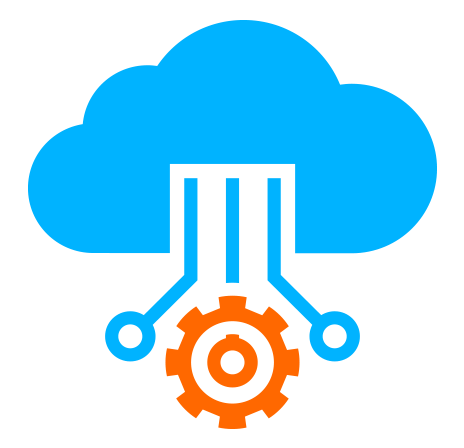 Server
Colocation
Server
Colocation
 CDN
Network
CDN
Network
 Linux Cloud
Hosting
Linux Cloud
Hosting
 VMware Public
Cloud
VMware Public
Cloud
 Multi-Cloud
Hosting
Multi-Cloud
Hosting
 Cloud
Server Hosting
Cloud
Server Hosting
 Kubernetes
Kubernetes
 API Gateway
API Gateway

Managed Firewall and Web Application Firewall (WAF) services provide essential real-time protection for cloud workloads by filtering and blocking malicious traffic, preventing common cyber threats such as SQL injection, cross-site scripting, and Distributed Denial of Service (DDoS) attacks. These solutions offer scalable, continuously updated defenses that integrate with cloud architectures to safeguard applications and APIs across multi-cloud and hybrid environments efficiently.
A Managed Firewall is a security service where a provider oversees the configuration, monitoring, and maintenance of firewall defenses to block unauthorized access while allowing legitimate traffic. A Web Application Firewall (WAF) specifically protects web applications and APIs by inspecting and filtering HTTP/HTTPS traffic for malicious activity targeting application vulnerabilities such as the OWASP Top 10 threats, including SQL injection, cross-site scripting (XSS), and CSRF attacks.
Together, managed firewall and WAF services defend cloud workloads in real time by detecting and mitigating evolving threats while reducing the operational burden on an organization’s security teams.
Real-Time Threat Detection and Blocking: Continuous monitoring and automatic blocking of malicious traffic to prevent exploits before they reach cloud workloads.
Signature and Behavior-Based Protection: Use of known attack signatures and AI/ML behavioral analytics for advanced threat identification and reduced false positives.
DDoS Mitigation: Protection against volumetric and application-layer DDoS attacks through rate limiting and traffic filtering.
Customizable Security Rules: Ability to define specific rules tailored to an organization's unique threat environment.
TLS Decryption and Offloading: Inspecting encrypted traffic without impacting the performance of backend applications.
Scalability: Cloud-native deployment that automatically scales protection with workload demand.
Threat Intelligence Integration: Leveraging global threat feeds for timely updates to security policies and signatures.
API Security: Guarding web APIs against abuse and misuse common in modern cloud applications.
Real-time managed firewall and WAF protection ensure uninterrupted cloud application availability and security with minimal manual intervention by:
Reducing Attack Surface: Blocking common and emerging threats before they exploit vulnerabilities.
Improving Compliance: Meeting regulatory security requirements by protecting sensitive data in transit.
Enhancing Performance: Reducing load on cloud workloads by offloading inspection and mitigation tasks.
Lowering Operational Overhead: Managed services simplify security management, freeing in-house teams to focus on other priorities.
Facilitating Agile Development: Seamless integration with DevOps pipelines ensures new features and apps remain secure from inception.
Managed firewall services establish protective perimeters by controlling network traffic based on IP, port, and protocol rules. WAFs add an application layer defense that understands web traffic context, inspecting cookies, headers, and request bodies to block attacks exploiting application logic flaws.
Together, these solutions act as gatekeepers that:
* Inspect inbound requests for SQL injection, XSS, CSRF, and other attacks.
* Monitor and filter bot traffic, blocking malicious bots and API abuse.
Detect anomalous behaviors with machine learning models to catch zero-day attacks.
* Provide logging and alerting functions to notify security teams of incidents in real time.
* Protect multi-cloud and hybrid workloads consistently with centralized management across environments.
When selecting a managed firewall and WAF service, consider:
Deployment Model Compatibility: Cloud-native solutions offer optimal scaling for dynamic workloads.
Security Features Depth: Advanced protections such as API security, bot mitigation, and anomaly detection add layers of defense.
Management and Support: Fully managed services reduce operational complexity.
Integration with Existing Tools: Compatibility with SIEM, DevOps tools, and cloud platforms.
Real-Time Updates: Access to live threat intelligence ensures up-to-date protection against evolving cyber threats.
Modern managed firewall and WAF services integrate with CI/CD pipelines and cloud infrastructure to provide continuous security without slowing development cycles. They offer programmable APIs, automated policy updates, and cloud service integrations to secure containerized apps, serverless functions, and APIs, making them essential for agile cloud workloads.
WAFs block SQL injection, cross-site scripting (XSS), CSRF, server-side request forgery (SSRF), DDoS Protection, bot attacks, and other OWASP Top 10 threats.
A managed firewall controls network traffic broadly based on IPs and ports, while a WAF focuses on application-layer HTTP/HTTPS traffic and exploits.
Yes, managed cloud-native solutions provide centralized protection across multi-cloud and hybrid environments.
In today’s rapidly evolving cyber threat landscape, managed firewall and WAF solutions provide indispensable real-time protection for cloud workloads. They defend against sophisticated application-layer attacks, reduce operational overhead, and support agile cloud development through scalable, continuously updated security services. Investing in these protections is critical to safeguarding cloud applications and maintaining regulatory compliance.

Let’s talk about the future, and make it happen!
By continuing to use and navigate this website, you are agreeing to the use of cookies.
Find out more


